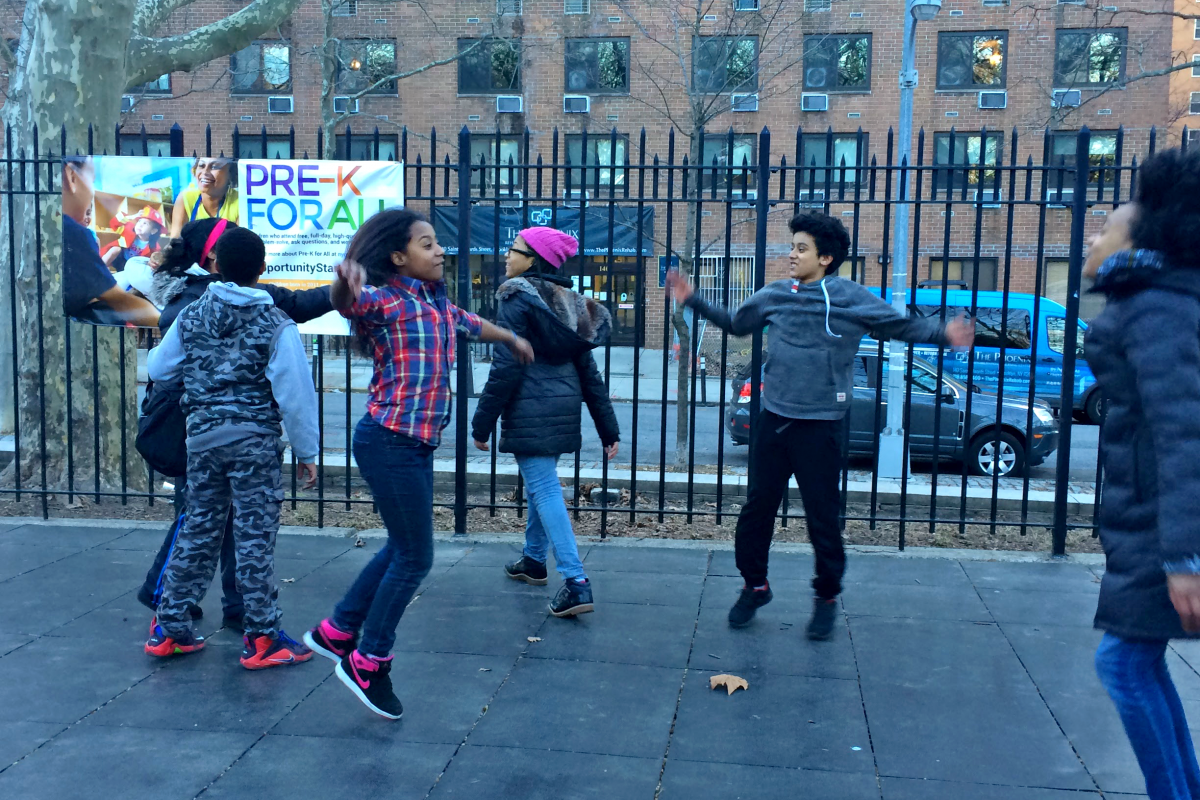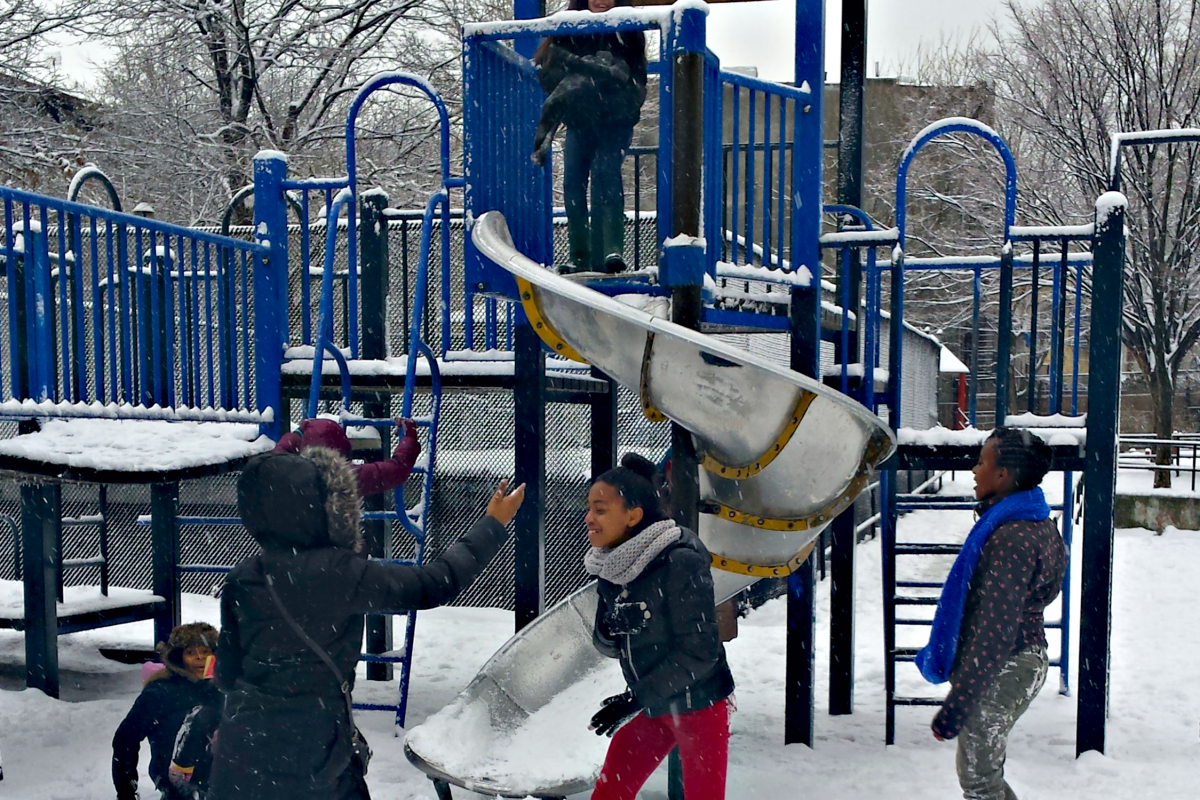
Keep up with our latest news and projects!

In New York City, public schools operate on weekdays between roughly 8 am and 3 pm. During those hours, the adjacent schoolyard is a private “school space,” not open to the public. However, in 2007 as a result of PLANYC initiatives to improve NYC’s livability, the schoolyard remains open and accessible to the general public after school has ended and on the weekends. As most NYC apartments and homes lack immediately adjacent, outdoor play spaces, the schoolyard plays an important role as a common, outdoor public space for young students and young adults who come together to engage in the space. The schoolyard creates a familiar space where kids can chat, play, run, hide and seek, dance, or even plug in their headphones.
Access to such a central space becomes especially important to young students as they enter middle and high school, where commuting to schools in other neighbourhoods and having friends who live in different boroughs are the norm.
Budding teenage, middle schoolers living in New York City have just reached the age where they are often mature enough to take public transportation home independently, and to decide how to spend their time after school lets out, yet before they are expected home. This time in between school obligations and home obligations is often spent in the schoolyard, on the sidewalks and bus stops near the school, or in the neighbourhood bodega. How they use and behave in these spaces is shaped not only by the mandatory restrictions on their time but also by social expectations from parents, teachers, other members of the community, and especially their friends.
 Middle school students jumping and playing in a Brooklyn schoolyard.
Middle school students jumping and playing in a Brooklyn schoolyard.
Teens are in the developmental stage where building friendships and social footing are crucial. The afterschool space allows them to share headphones and music taste, pick basketball teams and friends, and to talk and explore together outside of the structure of the school day. They can waver between the carefree, playful and inquisitive dispositions of a young child and the independent nature of a young adult seeking autonomy.
It is not only unsupervised middle schoolers who enjoy the schoolyard space, but also afterschool program groups, including those supported by NYC Department of Youth and Community Development’s “School’s Out NYC” (SONYC) initiative. Afterschool programs have the unique opportunity to engage students in urban spaces, including green and outdoor spaces like the schoolyard. Afterschool programs use a model that mixes established curricula and unstructured activities inside the classroom, in the schoolyard, and while out on urban expeditions throughout the city.
Throughout the school year, the schoolyard is a much-needed outlet for students participating in afterschool programming to get out of the physical and mental academic space. In the schoolyard, they can move freely, shout, run, or check their phones, all things that they are restricted from doing in school, on the subway, and in most spaces.
 Kids playing on the snowy jungle gym.
Kids playing on the snowy jungle gym.
No matter the weather conditions, afterschool students take advantage of any opportunity to play in the schoolyard. Whether the warm summer sun shines down on the dark pavement, or the hard-packed icy snow gives only glimpses of the blacktop, the students still pile up on the slides, play tag while dodging icy patches, or huddle over someone’s iPod in the shade of the school building.
If inclement weather doesn’t deter teens from playing in the schoolyard, then the poor design will not deter students from making use of the space in good weather. Features such as towering, chained fence boundaries and endless blacktop can make the playground feel unwelcoming. Intrusive layout, like sharp corners, and segmentation of space by railings and cement walls limit movement around the playground. Poorly designed schoolyard spaces are commonplace.
But regardless of these unwelcoming and restrictive features, the afterschool and weekend schoolyard consistently attracts company, particularly from teens and pre-teens, rain or shine. The schoolyard is a familiar and open space for students of all ages, and it allows for the freedom to play, shout, and generally be in a way counter to the social constraints of many other public spaces. Additionally, the flow of students from home to school (with or without an afterschool waypoint) makes the schoolyard a convenient place to gather and consequently to develop a community of users, despite the poor design of space and amenities. Afterschool programming enriches this community of users, which includes students, teachers, parents, and siblings, by formalizing non-school engagement with the schoolyard space.
This article belongs to a series of stories about the city at eye level for kids! You can access the full book online in PDF or pre-order your hardcopy to be delivered to your home.
Get your book here